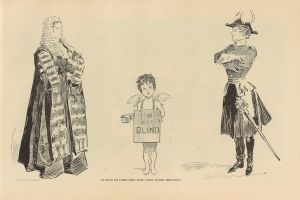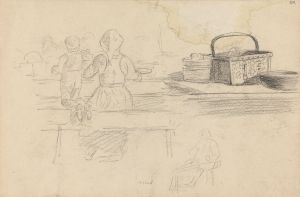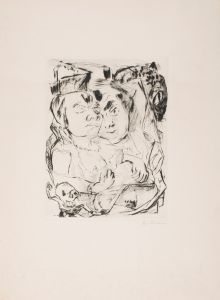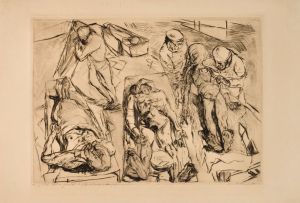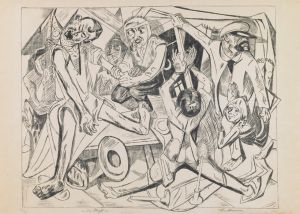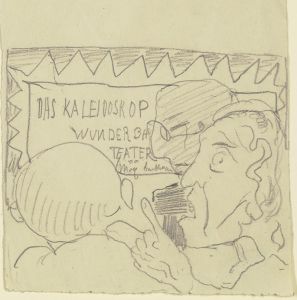
Boy with Lobster
A hand-painted replica of Max Beckmann’s masterpiece Boy with Lobster, meticulously crafted by professional artists to capture the true essence of the original. Each piece is created with museum-quality canvas and rare mineral pigments, carefully painted by experienced artists with delicate brushstrokes and rich, layered colors to perfectly recreate the texture of the original artwork. Unlike machine-printed reproductions, this hand-painted version brings the painting to life, infused with the artist’s emotions and skill in every stroke. Whether for personal collection or home decoration, it instantly elevates the artistic atmosphere of any space.
Max Beckmann's "Boy with Lobster" is a notable work by the German painter, who is recognized for his contributions to the Expressionist movement. Beckmann, born in 1884 in Leipzig, Germany, is known for his unique style that evolved through various phases, including Impressionism and New Objectivity, before he developed his distinctive form of Expressionism. His works often reflect the tumultuous socio-political landscape of early 20th-century Europe, marked by two World Wars and significant cultural shifts.
"Boy with Lobster" was painted in 1937, a period when Beckmann was living in exile in Amsterdam after fleeing Nazi Germany. The Nazi regime had labeled his work as "degenerate art," a term used to describe virtually all modern art that did not align with their propagandistic ideals. This period of Beckmann's life was marked by a sense of displacement and introspection, themes that are often reflected in his art from this time.
The painting depicts a young boy holding a lobster, a subject that might seem whimsical at first glance but is imbued with deeper meaning upon closer inspection. Beckmann's use of bold lines and stark contrasts is evident in this work, characteristic of his mature style. The boy's expression and posture, along with the presence of the lobster, invite various interpretations, though Beckmann himself did not provide explicit explanations for his symbolism. This ambiguity is a hallmark of Beckmann's work, encouraging viewers to engage with the painting on a personal level.
The composition of "Boy with Lobster" is notable for its use of space and color. Beckmann employs a rich palette, with the lobster's vivid red standing out against more subdued background tones. This contrast draws the viewer's attention to the central figures, creating a focal point that emphasizes the interaction between the boy and the lobster. The painting's composition is carefully balanced, with Beckmann's characteristic attention to detail evident in the rendering of textures and forms.
"Boy with Lobster" is part of Beckmann's broader oeuvre that often explores themes of human existence, identity, and the complexities of the modern world. His works from this period frequently feature figures in enigmatic settings, reflecting his interest in the human condition and the psychological undercurrents of everyday life. Beckmann's art is known for its narrative quality, with each painting offering a glimpse into a story that is both specific and universal.
Today, Max Beckmann is regarded as one of the most important artists of the 20th century, with his works held in high esteem by museums and collectors worldwide. "Boy with Lobster" exemplifies his ability to blend technical skill with profound thematic content, making it a significant piece within his body of work. The painting continues to be studied and appreciated for its artistic merit and the insight it provides into Beckmann's life and the era in which he lived.





